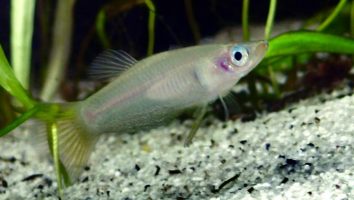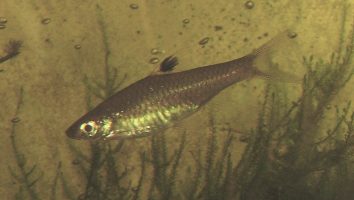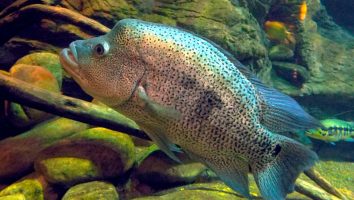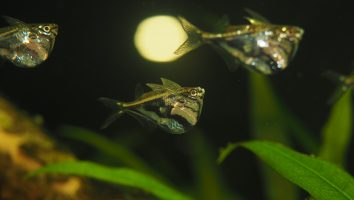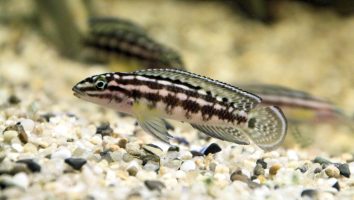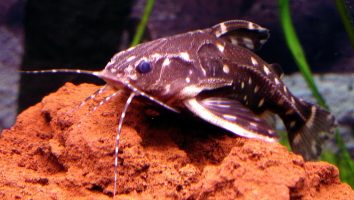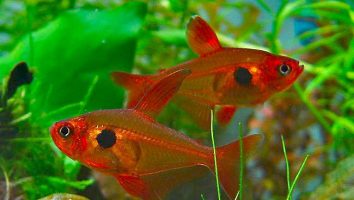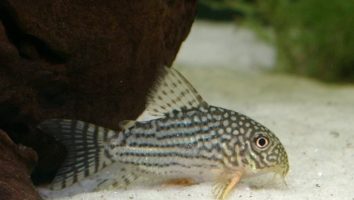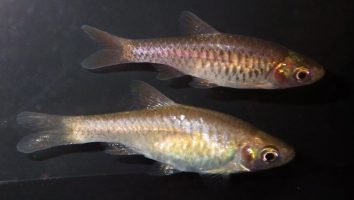The Dwarf Botia is a beautiful freshwater fish that is perfect for the beginner aquarist. They are hardy, peaceful, and easy to care for.
This guide will teach you everything you need to know about Dwarf Botia care. You’ll learn about their diet, size, lifespan, and more!
Table of contents
Species overview
Dwarf botias (scientific name: Yasuhikotakia morleti) are a type of freshwater fish that’s native to Laos, Cambodia, and Vietnam.
They prefer slow-moving waters with a lot of plants and vegetation. This is something that’s common to many species of botia, and it’s something you’ll want to replicate in their tank.
Dwarf botias are a peaceful fish, but they can be quite nippy. They’ve been known to nip at the fins of other fish, so it’s important to keep an eye on them if you have other fish in the tank.
The main draw of the dwarf botia is its bright color. They are a beautiful fish that can really add some color to your aquarium.
Appearance
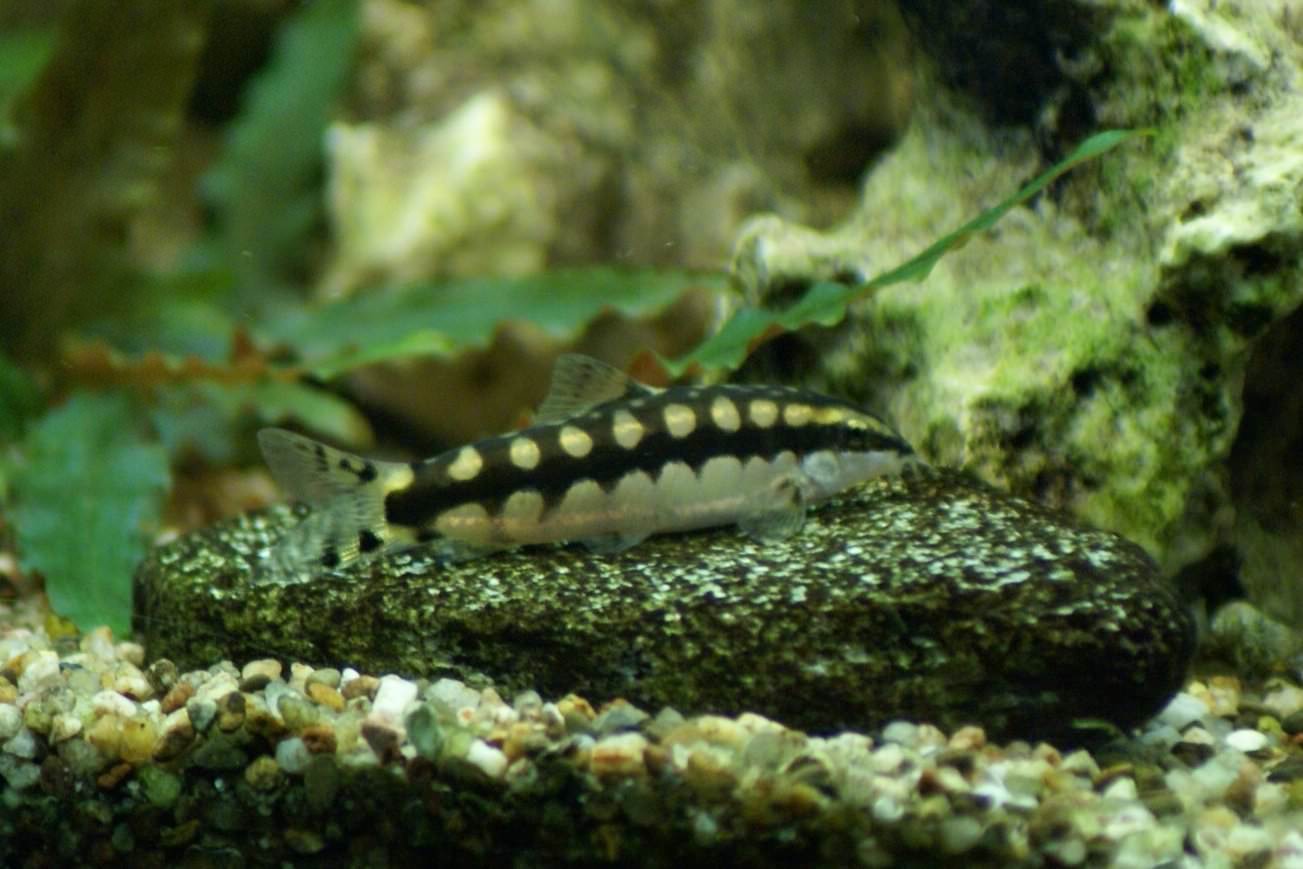
The Dwarf Botia is a small and colorful member of the loach family. These little guys have a long and slender body with a round cross-section. Their belly is slightly flattened which helps them stay close to the substrate.
The coloration on these fish can vary quite a bit depending on the subspecies. The base color is usually some shade of brown, tan, or gold. This is then accented with black, white, or yellow stripes that run horizontally along the body.
The fins on the Dwarf Botia are all fairly similar in size and shape. The dorsal and anal fins are both long and thin. They have a forked caudal fin that’s slightly taller than it is wide.
The pectoral fins are a bit shorter and begin about halfway down the body. These little loaches also have a pair of barbels on their chin that they use to help locate food in the substrate.
Lifespan
The lifespan of a Dwarf botia is typically 5 to 8 years. However, there are some reports of them living up to 10 years in captivity.
As with any other animal, the lifespan of a Dwarf botia can be impacted by a number of different factors. Poor water quality, for instance, will shorten their lifespan.
Likewise, stress from bad tank mates can also lead to an early death. Overall, though, these are fairly hardy fish that do well in captivity.
Size
The Dwarf Botia Loach typically only reaches a length of 3 to 4 inches, making it one of the smaller loach species available.
Tank
Tank Size
The minimum tank size for a dwarf botia is 30 gallons. However, we recommend going up to a 50-gallon tank if you can. This will give them plenty of space to school and move around.
Botia are known to be escape artists so make sure your tank has a tight-fitting lid.
Water Parameters
The dwarf botia is a relatively new addition to the aquarium trade. It’s native to Southeast Asia and is closely related to the better-known yoyo loach.
This freshwater fish is often sold as a community fish. It can do well in a community tank as long as the tank mates are of a similar size and temperament. They’re not as social as some loaches, but they will do fine in a group.
The dwarf botia does best in slightly acidic to neutral water. A good rule of thumb is to keep the pH between 6.5 and 7.5. Water hardness can be anywhere from soft to hard, but you should aim for moderate hardness.
- Water Temperature: 72°F to 82°F
- pH Levels: 6.5 to 7.5
- Water Hardness: Soft to hard
- Alkalinity Levels: 4 to 8 dKH
What To Put In Their Tank
When it comes to setting up an aquarium for Dwarf Botia, there are a few things you’ll need to take into account.
First and foremost, these fish are known to be escape artists. They’re very good at finding any and all openings in an aquarium so you need to make sure everything is secure.
The second thing you need to take into account is that these fish are very active. They love to swim around and explore so you need to give them plenty of space to do so.
With that being said, a 30-gallon tank is the bare minimum we recommend for a single Dwarf Botia. If you want to keep a group of them then you’re going to need an even larger tank.
When it comes to the inside of the aquarium, these fish don’t have any specific requirements. They’re not picky eaters and they’re not fussy about the plants or decorations you put in their tank.
We recommend going with a gravel substrate and adding some rocks and driftwood for them to hide in and around. You can also add some plants if you want, but be aware that they might nibble on them from time to time.
Common Diseases
There are a couple of diseases that you’ll want to look out for with your dwarf botia. They aren’t prone to sickness like some other species of fish, but they aren’t immune to subpar living conditions either.
The first one that you’ll want to keep an eye out for is hole-in-the-head disease. This is a rather gruesome looking illness that stems from poor water quality and the presence of activated carbon in your tank.
This will present itself as one or two pits/holes in the skin of your botia’s head. While it’s almost always curable (fixing your water quality and removing activated carbon is usually all you need to do), it will usually leave some scarring on your poor fish!
The other disease you’ll want to keep an eye out for is ich. This is obviously not a botia-specific illness, but since ich is so common it’s definitely worth mentioning here.
This will show itself as white spots on the body, fish, and gills of your fish. We won’t do a full ich treatment guide here (there are plenty of those online) but it’s something you need to take very seriously if it affects your botia.
Behavior & Temperament
The Dwarf botia is a peaceful fish that does well in a community tank. It is social and active, but can be shy around other fish.
This fish is a bottom-dweller and likes to hide among the plants and rocks in the tank. It is nocturnal and will come out to feed at night.
The Dwarf botia is a scavenger and will eat anything it can find. This includes algae, small crustaceans, and insects.
This fish is not aggressive, but it can be territorial. It is known to chase other fish away from its hiding places.
Tank Mates
When it comes to finding the perfect tank mates for dwarf botia, there are a few things to keep in mind.
First, these fish are social creatures. They do best in groups of at least 5-6 fish. As a result, it’s important to find tank mates that are also social.
Secondly, dwarf botia are bottom dwellers. They prefer to stick to the lower levels of the tank. This means that you can easily add fish that prefer the middle or top of the tank.
Finally, these fish are peaceful. They’re not aggressive and get along with most species.
With these factors in mind, here are a few compatible tank mates that tend to work well:
- Neon Tetras
- Guppies
- Platies
- Mollies
- Swordtails
- Endler’s Live Bearers
- Cherry Shrimps
- Ghost Shrimps
Breeding
Dwarf botias are one of the easiest loach species to breed in captivity. They’re also one of the most popular choices for loach-keepers.
As with most loaches, the first step is to sex your fish. Females tend to be a bit larger than males and have a more rounded belly. Males also have longer pectoral fins.
Once you’ve sexed your fish, you’ll need to set up a breeding tank. The tank should be at least 20 gallons in size. It should also have a tight-fitting lid to prevent the fish from jumping out.
Add a layer of sand to the bottom of the tank. Then, add some live plants and some driftwood. The plants are important because they provide the fry with a place to hide. The driftwood is important because it provides the adults with a place to lay their eggs.
To recreate their natural environment, you’ll need to adjust the water parameters. The water should be between 72 and 78 degrees Fahrenheit. The pH should be between 6.5 and 7.0. The hardness should be between 5 and 10 dGH.
Once the tank is set up, you can add the Dwarf botias. Start with a group of six to eight fish. Then, let them acclimate to their new environment for a few days.
Feed the fish a diet of live and frozen foods. Bloodworms and brine shrimp are good choices. You can also offer them live plants.
After a few days, you should start to see the females getting larger. This is a sign that they’re full of eggs. When this happens, the males will become more aggressive. They’ll start to chase the females and nip at their fins.
This is normal behavior. It’s the males’ way of getting the females to release their eggs.
Once the eggs are released, the males will fertilize them and then guard them. The eggs will hatch in about three days.
Once the fry have hatched, you can remove the adults from the tank. The fry will feed on the algae in the tank. You can supplement their diet with baby brine shrimp and other live foods.
As they grow, you can slowly start to introduce them to flake food and pellets.
Conclusion
As you can see, there are very little downsides to owning a Dwarf Botia. They will spruce up the look and feel of your tank with their vibrant colors and get along with the other community fish in your tank.
They’re also super easy to take care of, which is a big plus in our book. Sometimes more difficult fish can be rewarding, but that experience isn’t for everyone.
We’re huge fans of this fish and we highly encourage you to give them a chance. We think you’ll be very happy with them!

